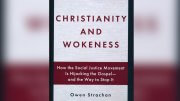Counselees, former and current, say this is the most valuable problem-solving tool in my problem-solving-tool-kit. And I agree. This tool is built on the time tested proven axiom: An ounce of prevention is worth a pound of cure. If we prevent problems from developing we do not need to seek a cure. This tool is easiest taught in the context of husbands and wives. From these illustrations the tool can be adapted to fit many other areas where problems occur.
STAGE ONE: WHEN A PROBLEM DEVELOPS
Husband attacks his wife and/or wife attacks her husband
When – not if – a problem presents itself, husbands and wives often attack each other. Note: We will never be without problems; yet, we need never be without a solution. If any humor accompanies problems, I say it is at this stage: While the husband and wife attack each other the problem is not being attacked, i.e., resolved.
STAGE TWO: WHEN A PROBLEM DEVELOPS
The Husband attacks the problem as he sees it. The Wife attacks the problem as she sees it.
As the husband and wife attack the problem as they see it, there seems to be progress. Why? They stop directly attacking each other. But the sarcastic humor still exists: The problem is not being attacked i.e., resolved.
After a while the husband may figuratively think: The harder I try the behinder I get. I cannot seem to satisfy my wife.
Likewise, she may figuratively think: My husband is clueless. I’m not asking him to jump through hoops. Why can’t he see I just want him to pay more attention to me – like when we were dating?
So what do they do? The only thing they know how to do – go back to attacking each other. The more they repeat this cycle the more they attack each other.
A CENTRAL TRUTH: There is a biblical solution to resolve problems regardless of the source. Before getting to that there is a central truth that must be recognized regarding who is most right or who is most wrong.
Truth: No one can be 100% right or 100% wrong. Biblical support is found in Romans 3:10: “…as it is written, There is none righteous. No not one:…” The Greek definition of righteous confirms this conclusion. Dikaios: equitable (in character or action) by implication innocent, holy (absolutely, relatively): – just, meet, right (eous).
Fact: Contenders in a matter must understand and accept that there is always a certain amount of right and a certain amount of wrong on both sides of every issue. By dis-regarding this, the problem takes on a dynamic that often becomes bigger than the initial problem as each may gather their supporters to back them up their feud grows.
STAGE THREE: WHEN A PROBLEM DEVELOPS
The Husband unites with his Wife and together they attack the problem
In stating this principle, in real time counseling, I get pushback.
“Tom, between us that would launch World War III. If we could do it we wouldn’t have problems we couldn’t resolve.”
NEEDED: AN ALTERED MINDSET
To resolve a problem between any two people the mindset they bring to the table must be altered. The primary mindset to alter is that of trying to determine who is most right or most wrong. The biblical answer is it doesn’t make any difference from God’s perspective.
Follow this Bible-based reasoning.
Theoretically, if the husband is 75% wrong he is 25% right. If the wife is 99% right she is 1% wrong. What does God require from each? God requires him to give up 100% of his 75% wrong. God requires her to give up 100% of her 1% wrong. So what difference does it make as to who is most right and who is most wrong? It doesn’t.
Civility is a key ingredient in problem solving.
Before a problem develops, whether first recognized by the wife or the husband, there should be a plan to dismantle it immediately. First be prayed up before sitting down in a neutral place to discuss their differences. Next they must agree if they cannot agree they will not be dis-agreeable i.e., get ugly with each other.
If they agree on the nature of the problem, they go to a topical Bible for direction for attaining resolution. If they cannot agree they cease discussion, set a time to come back to the table after further prayer and soul-searching and take up the matter again. This phase is repeated until resolution is reached. Remember, God wants marriages to work.
Practice makes perfect.
Couples normally learn quickly so this tool is not usually employed too many times before they can quickly resolve their differences.
The Litmus Test:
Was this incident worth more than our relationship?
Next time: How to avoid self-fulfilling prophecy.
 Rev. Thomas (Tom) C. Lacy, Advisory Board Member of the Virginia Christian Alliance and Founder and Director, of New Hope Counseling Service and on the Board of Advisors of the Virginia Christian Alliance
Rev. Thomas (Tom) C. Lacy, Advisory Board Member of the Virginia Christian Alliance and Founder and Director, of New Hope Counseling Service and on the Board of Advisors of the Virginia Christian Alliance




